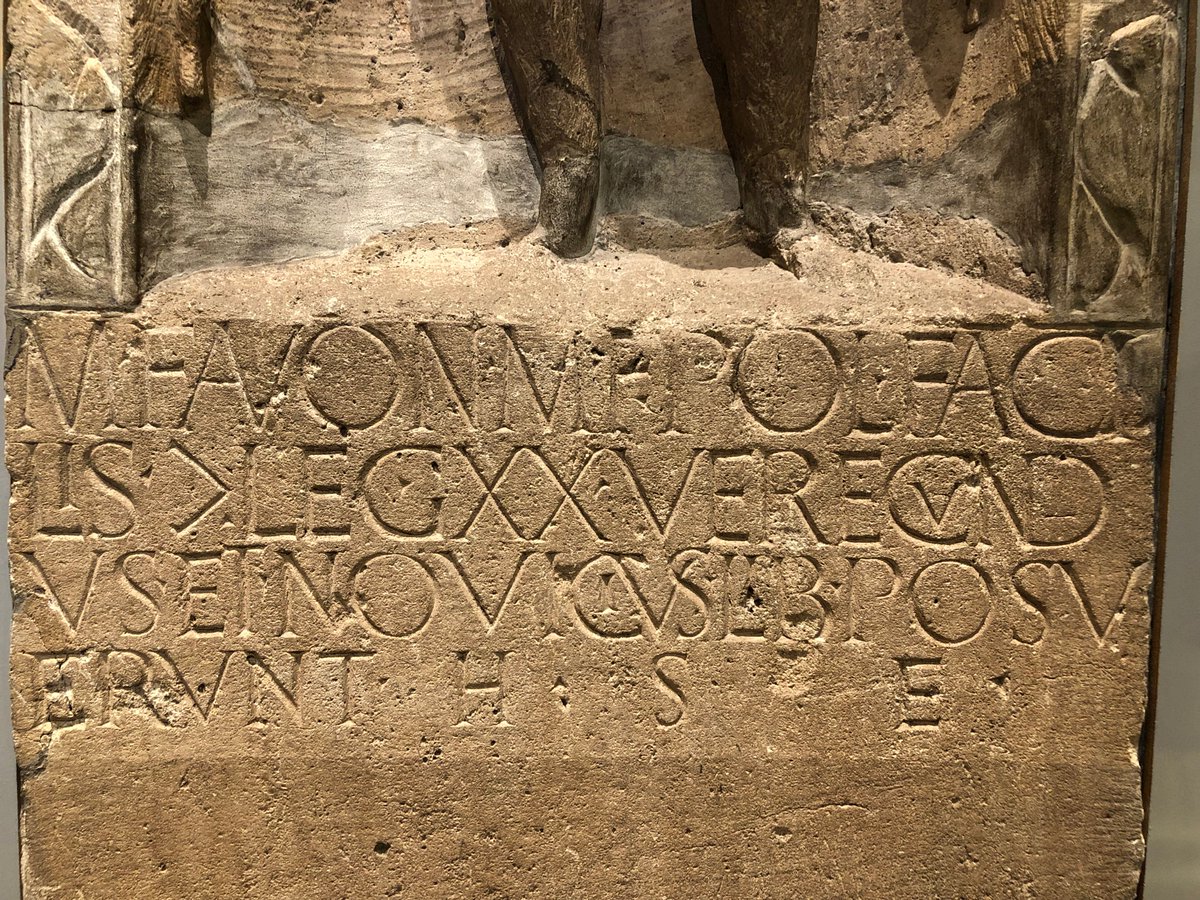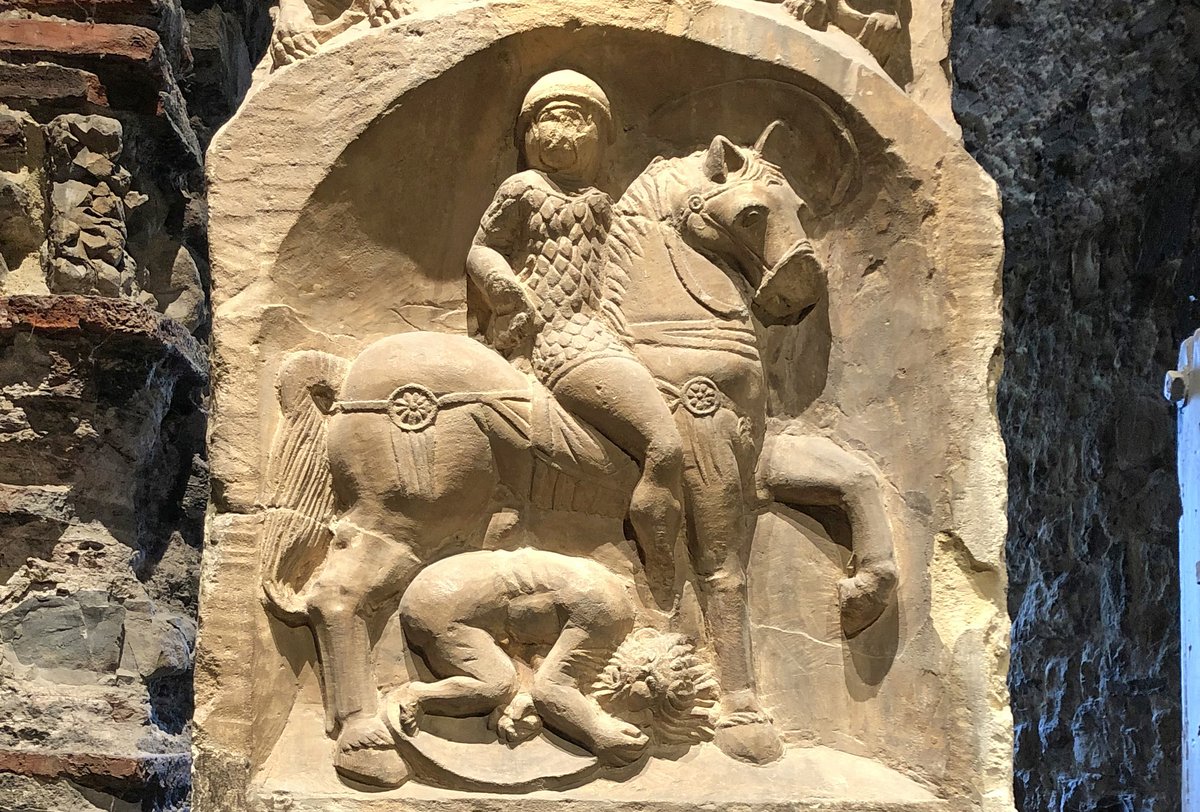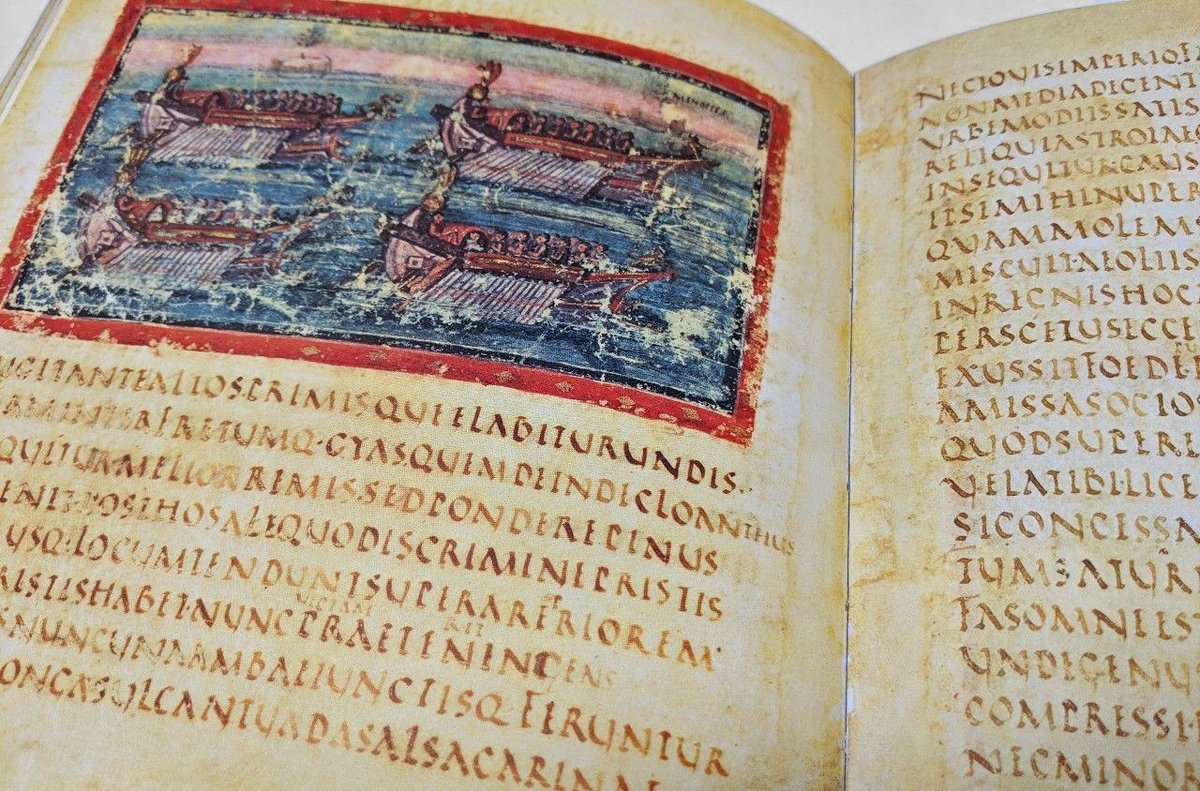
1) A Roman centurion and a Roman auxiliary cavalryman who both lived at a remarkable intersection in history; taking part in the Roman invasion of Britannia in 43 AD, they fought and died in the conquest of a wild and mysterious land at the edge of their world.. 

2) Marcus Favonius Facilis was a centurion (commanding a unit of around 80 men) in the Twentieth Legion, who came to Britain as part of Claudius’ initial invasion force. He died a few years after the invasion while still in service, but we are not told his age or cause or death.. 

3) In a wonderfully preserved depiction, Marcus is shown in his centurion's uniform, wearing a cuirass and ornate belt over the leather 'pteruges' kilt worn by officers. In his right hand he holds his centurion’s stick (vitis), and in his left he holds the pommel of his gladius.. 

4) In a rare additional survival, when Marcus' toppled gravestone was excavated in 1868 his remains were found preserved underneath - a lead burial urn still holding his cremated bones and ashes after almost 2000 years.. 

5) As well as his cremation urn, a simple but elegant glass flask was deposited in Marcus' grave alongside a black eggshell-ware cup made in Italy, both recovered perfectly intact from the burial.. 



6) Alongside the gravestone of Marcus stands the memorial to Longinus Sdapeze, a Thracian cavalryman from modern day Bulgaria, who died at the age of 40 after 15 years' service in the Roman army.. 

7) Under a winged sphinx, flanked by lions, Longinus is shown on horseback in scale-armour, dramatically riding down a cowering, naked Briton. He would have originally held a spear, ready to strike the barbarian below.. 

8) While the gravestones offer some of the first sculptural depictions of Romans in Britain, here we also have one of the earliest depictions of a native Briton; shown naked with wild beard and spiked hair, largely matching descriptions in ancient sources.. 

9) In an exquisite irony, the excellent preservation of both gravestones suggests they were intentionally toppled soon after being set up - most likely by the rampaging forces of Boudica, who destroyed Roman Camulodunum in 60 AD.. 



10) One final delightful detail: the forces of Boudica also appear to have hacked off the head of Longinus, which was missing when the gravestone was unearthed in 1928 ...Though when the find-spot was further explored in 1996, the head was found and reunited with the cavalryman! 

The gravestones of Marcus Favonius Facilis and Longinus Sdapeze are on display at Colchester Castle Museum.
• • •
Missing some Tweet in this thread? You can try to
force a refresh
























